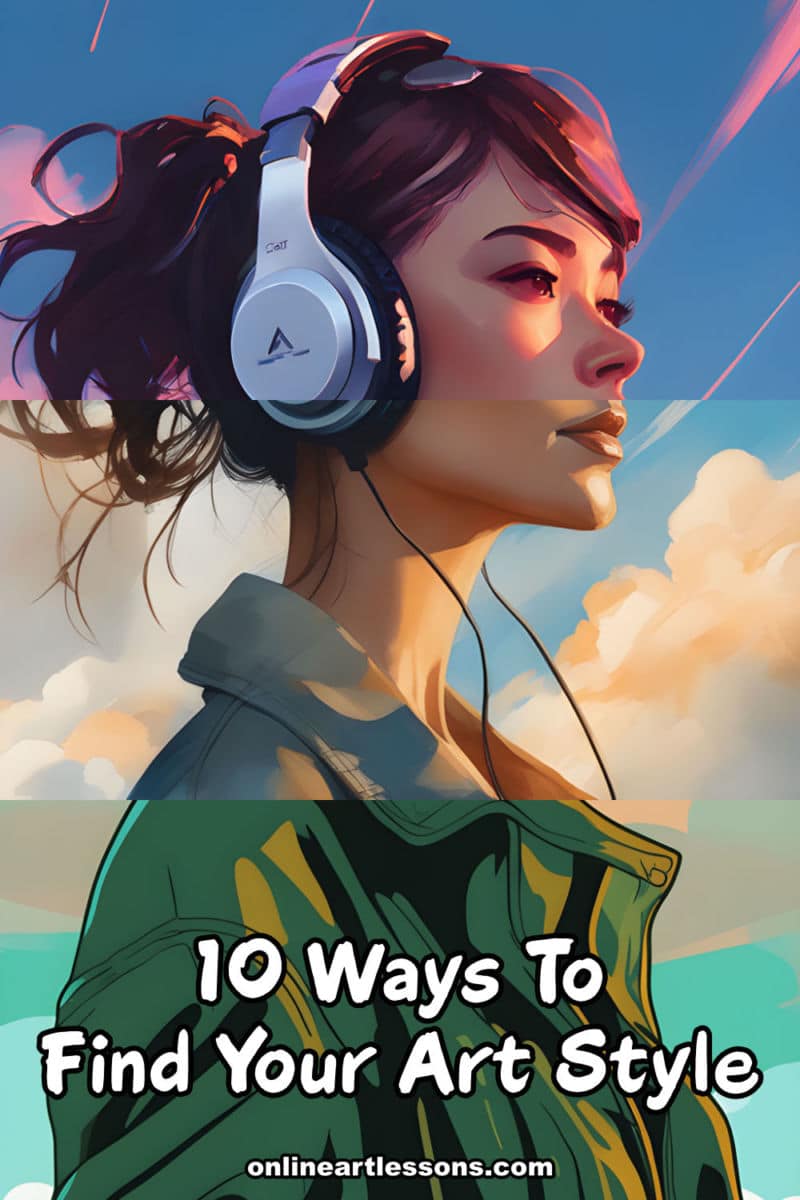Finding your art style may seem like a mammoth task, but really it’s not. Your art style is already inside you, you just need to work on drawing it out and developing it! There’s no one way to find your art style, in fact, the process is different for everyone. However, there are some simple steps you can take to help you along the way.
What is Your Art Style?
Your art style is what makes your work feel like it was made by you. It is the special twist that only you can give your art which ties it to you and no one else. In short, it’s what makes your art unique!
There’s no one-size-fits-all method to finding your art style. It is a personal process. Every artist will have a different story of how they came to discover their style. Similarly, every art critic and historian who writes about that artist will interpret it in their own way.
Your style is what sets you apart from other artists and what links you to them. When we create art, we reference hundreds of years of visual culture in our work. All art is a culmination of what has come before, just shaped in a new way. With this in mind, you can use the work of other artists to inspire and inform you, helping to develop your own, individual style in the process!
Developing Your Art Style
Finding your art style rarely happens instantly, it is usually gradual. If you think to your favourite artists and the work they produced throughout their career, it is unlikely that their style stayed unchanged for decades. Like any artist, your style will grow and develop as you gain more experience and you will start to understand what links your artworks together.
Though the process might happen naturally, there are some ways that you can work on finding your art style. Read on for 7 steps to help you find your art style.
1. Continue with what you started as a child
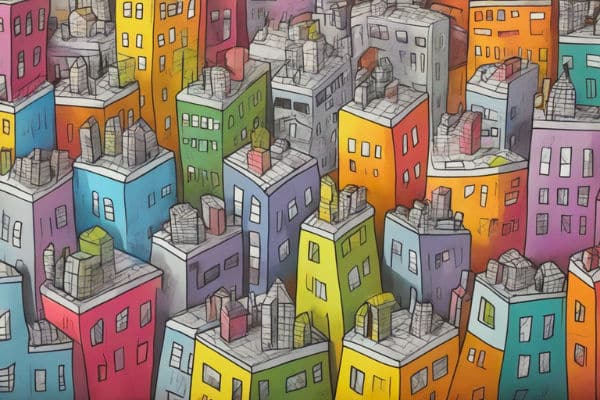
Many of us make our first artworks as children. Childhood is a time of great experimentation and creativity and we can often remember our first experiences of making art at a very young age.
For me, it is the memory of being left on my own with a big sheet of blank paper and some poster paints. When my mum went out of the room, I decided to do away with the paintbrush and use my hands instead, pouring more and more paint onto the paper and swirling it around with my hands.
The results ended up predictably brown but it was the sensory enjoyment of feeling my hands in the paint that I relished. Thankfully, my mum had the foresight to put an apron on me and sit me in the kitchen because by the time she came back in, the paper, the chair, the floor and I were covered in paint!
Think back to your earliest memories of making artworks and the activities you especially enjoyed doing as a child. It’s quite likely that you will be able to think of mediums that you naturally gravitated towards and which ones you found easier or more enjoyable to use. For me it was paint, for you it might be anything else!
This is a really good place to start when you’re trying to find your art style. You will probably see patterns start to emerge that started earlier in your life.
2. Work on your technical skills
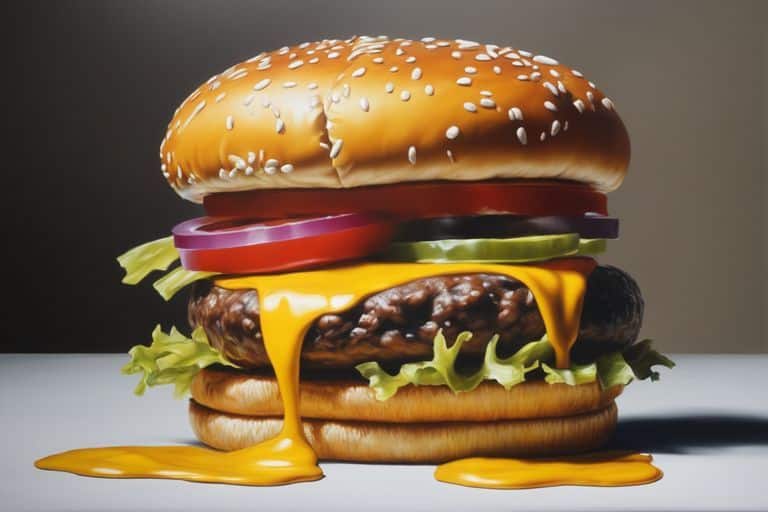
As well as considering which aspects of art you have always enjoyed, it is also worth spending some time on your technical skills. Investing time and energy into improving your technical skills will help you to hone your personal art style. If you don’t know what you like doing or what kind of art you want to make, focussing on your technical skills can help you to find out.
By studying light, form, colour and shape, you can begin to unwrap the aspects of making art that interest you the most. Through experimentation and study, you should get an idea of how an artwork is made and this is one of the first steps towards creating your own.
Technical skills also introduce you to new perspectives for making art. It gives you ideas from other sources and often input from professional artists. Working on your technical skills can also get you into a routine of making art, encouraging you to practice your craft and create a regular schedule. These aspects all make it easier for you to find your style.
3. Get comfortable with your mediums
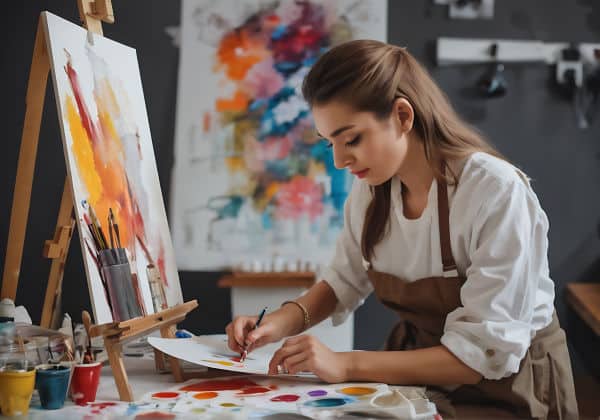
If you find that you are drawn to one or two mediums in particular, you can try dedicating more time to developing your technique in those areas. You might like to take some classes or spend time copying other artists who work in that medium.
A key benefit of practicing with your favourite mediums is that it will become easier for you to create what is in your head. Something that many first time artists struggle with is the barrier behind their imagination and their skill. Technical skills and familiarity with your medium will help you to make your ideas a reality!
Once you know how to use your favourite medium to create a broad range of effects, you can be more more confident in experimenting with your own style. Point 2 and this one are all about giving you the skills you need to be the artist you want to be!
4. Appreciate the influence of your experiences
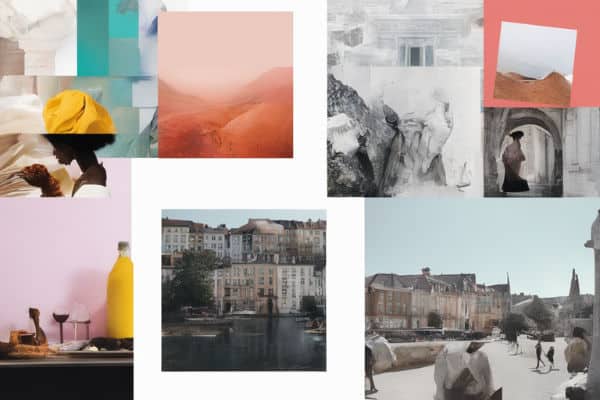
You can’t underestimate the impact of your experiences on your art style. Our minds are never just a blank canvas, they are shaped by our lives. The art we are exposed to from a young age and all through adulthood gets woven into our imaginations. Either consciously or unconsciously, we absorb the artistic influences around us and these influences are often expressed in our art.
Of course, it’s not just art that has an impact on our creativity. These influences can come from a huge range of sources, including architecture, landscapes, food, people, music and more. They are translated into colours and forms that help to make your art unique.
If you’re looking to develop your art style, you might like to try mapping out some of the most formative and beautiful experiences you have had. You could try making a mood board or a series of collages, bringing together the visual influences that have made their mark on you.
Alternatively, you might like to look out for exhibitions that particularly catch your eye. Take a camera or a sketchbook along and record the images that have a strong influence on you, especially ones that you feel you are naturally drawn to.
You can then begin a process of experimenting with bringing these influences into your work. The aim is not to copy another artist’s work and use it as your own. Instead, it’s about drawing inspiration from other artists and using these influences to find your own style.
5. Find your voice
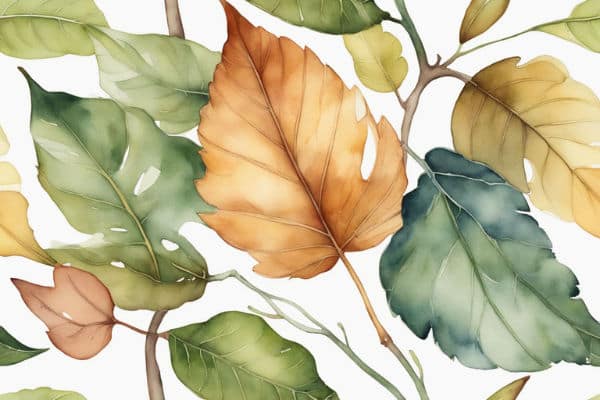
In the process of understanding and appreciating your experiences, you can also begin to find your areas of personal interest. You will already have topics that spark your imagination or pique your curiosity and part of developing your art style is the act of zooming in on these topics.
For instance, I have a particular interest in plants and nature. This is an interest that permeates many different areas of my life, including my art. I naturally gravitate towards natural subjects in my artwork more than anything else.
You will have your own interests that will help you find your artistic voice. If you’re not sure about what your interests are, try making a list of things that have interested you in the past week:
What you read – newspaper articles, books, the back of a cereal packet?
Images you were drawn to – adverts, magazine, artworks, something you saw on Instagram?
Topics that made you curious – a fact a friend told you, new research, a TV show, a conversation you overheard?
Hobbies you like doing – cooking, cycling, fishing, listening to music?
By examining just one week of your life, you can start to see patterns in your interests. There will undoubtedly be subjects that you are drawn towards. Your personal interests are where you’ll find the path to your style and your voice.
6. Have fun finding your art style
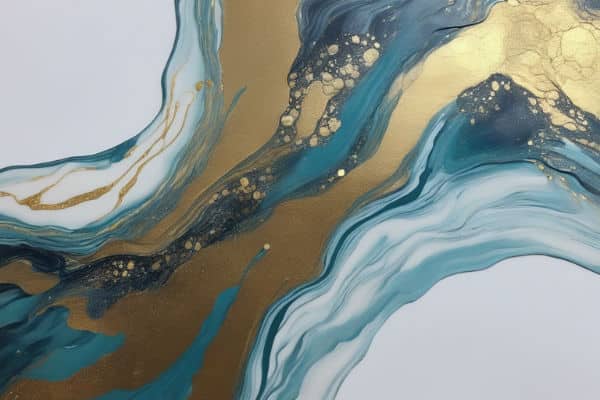
Finding your style is also about experimenting with what you like! When you have a good idea of the subjects that interest you and the mediums you most like to use, you can start to develop your colour palette, texture and the techniques that work best for you.
This is the time when you can really have fun and be playful. Be as creative as you can possibly be and try new things! Practice new ways of doing art and see where you end up. If you’re used to working on a small scale, go bigger! If you’re used to large artworks then try painting in miniature! Your style will gradually develop with your experiments.
You might also find that you develop interest in new mediums, transferring your style to incorporate different types of art. Once you become comfortable with one medium, you can experiment with others to see how your style changes. This is all part of the joy of being an artist!
7. Collaborate with others
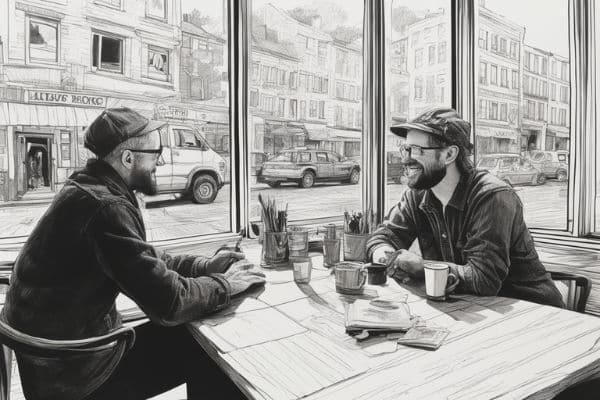
Collaboration can spark new ideas and lead you to explore areas of art that you might not have considered on your own. Working with other artists can challenge you, inspire you, and help you see your art from different perspectives. Collaborative projects can be a fun and insightful way to discover aspects of your style that resonate with others.
Collaboration can take many inspiring forms in the art world. Renowned artists such as Jean-Michel Basquiat and Andy Warhol famously collaborated on paintings, blending their distinct styles to create something entirely new. In the realm of digital art, platforms like Behance and DeviantArt foster collaboration between artists from around the globe, allowing them to work on shared projects, exchange ideas, and influence one another’s work. Even local art communities often hold joint exhibitions, workshops, or mural projects, encouraging artists to come together and co-create. Whether it’s partnering with a fellow artist to create a mixed-media piece, participating in a community art project, or engaging in an online art challenge with others, collaboration opens doors to new techniques, perspectives, and creative growth. Embracing the collaborative spirit can lead to unexpected discoveries and enrich your journey to finding your art style.
8. Get feedback on your style
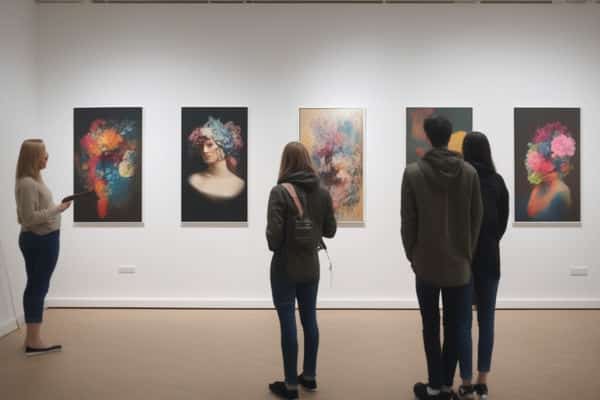
To test out the strength of your style, you could try asking for another perspective. You may find that feedback from others helps you refine your style further. It can sometimes be helpful to hear comments on your art style, particularly what areas need more work and which elements to make stronger.
As you find what works for you and what receives positive feedback, you will probably find that you naturally develop your style further. Your style will give your artworks a sense of cohesion, which in turn makes them more interesting to other people.
At the same time, don’t let negative feedback get you down. Remember that many great artists were ridiculed for their style in the beginning! Listen to the opinions of others but ultimately, go with your gut.
9. Embrace Your Individuality
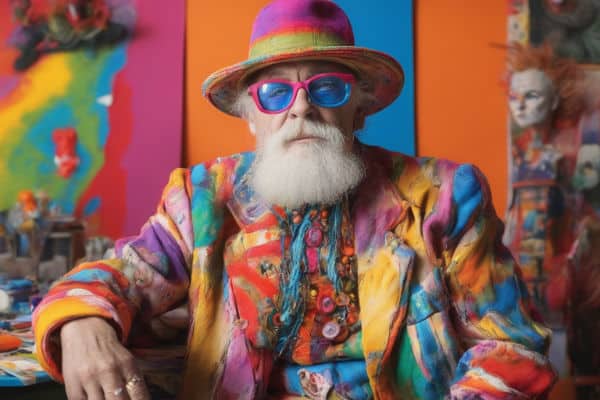
Finding your art style is a deeply personal journey, and it’s essential to embrace your individuality along the way. There’s no right or wrong way to approach art, and your unique perspective is what will make your work stand out.
Your art style isn’t about conforming to trends or mimicking others; it’s about discovering what resonates with you and expressing that through your work. Don’t be afraid to break the rules, experiment with unconventional ideas, and follow your intuition. Your individuality is your greatest asset, and nurturing it will lead you to a style that’s authentically yours.
Trust in your instincts, and don’t be swayed by external pressures or opinions. Your art style is a reflection of you, and that’s what makes it special.
10. Don’t be scared to change paths
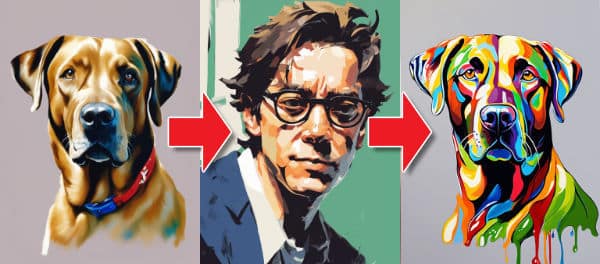
Developing your own style probably won’t be a linear process. You might go down one route and then return to something you were developing earlier. You might enjoy one style for a while and then decide you want to try something different. This is completely natural and can actually be a good thing!
For example in the image above I have illustrated how you may start out painting realistic dogs then decide you want to try your hand at pop art portraits. Painting human portraits is a natural progression in one sense but the style is very different to what you are used to. The differentstyle teaches you new techniques and broadens your painting knowledge. Later you then decide to go back to painting dogs, but this time you can apply your knowledge of the anime style portraits to your dogs. This knowledge gives you the confidence to play around using new colours in the portrait. In the end of the day your willingness to change styles has given you the ability to create a whole new style which looks nothing like the previous two.
Finding your style is a continual process and you will never stop refining and developing your techniques. By taking the time to learn the best techniques and hone your craft, you will find that you’re more able to produce the artworks you want to. At the same time, drawing on your experiences from your life will also help to make your art more unique.
Ultimately, no one can tell you exactly how to find your art style, the process you take will be personal to you. And that’s what makes it special.
Conclusion
Finding your art style is an exciting and ever-evolving journey, one that’s as unique and individual as you are. It’s not about fitting into a predefined mold or adhering to someone else’s standards. Instead, it’s about embracing your interests, experimenting with different mediums, seeking inspiration from the world around you, and most importantly, honoring your individuality.
The steps outlined in this article are not rigid rules but rather guidelines to help you explore and discover what resonates with you. From recalling childhood memories to honing technical skills, playing with different mediums, and seeking feedback, the path to finding your art style is filled with opportunities for self-discovery and creative expression.
Remember that your art style will continue to evolve and grow with you. There’s no final destination, only a continuous process of exploration and development. So, be patient with yourself, have fun with the process, and trust in your unique artistic voice. Your art style is a reflection of who you are, and that’s what makes it truly special and invaluable.
Keep creating, experimenting, and enjoying the artistic journey. Your style is already inside you, waiting to be discovered and shared with the world.
If you enjoyed this tutorial, then you will also learn a lot from my article on 5 Way to Convey Emotion in Your Artwork.
Pin Me
